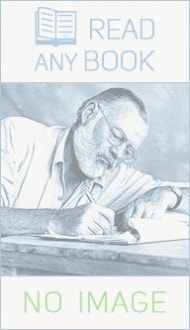Author Bjørnson Bjørnstjerne
14
Sir Edmund William Gosse CB[1] (21 September 1849 – 16 May 1928) was an English poet, author and critic; the son of Philip Henry Gosse and Emily Bowes.[2] Gosse worked as assistant librarian at the British Museum from 1867 alongside the songwriter Theo Marzials[3], and in 1875 became a translator at the Board of Trade, a post which he held until 1904. From 1904 to 1914 he was chief Librarian of the House of Lords Library. In the meantime, he published his first volume of poetry, On Viol and Flute (1873) and a work of criticism, Studies in the Literature of Northern Europe (1879). Gosse and Robert Louis Stevenson first met while teenagers, and after 1879, when Stevenson came to London on occasion, he would stay with Gosse and his family. He became acquainted with the pre-Raphaelites, and with Thomas Hardy, Alfred Lord Tennyson and Algernon Swinburne. He became, in the 1880s, one of the most important art critics dealing with sculpture (writing mainly for the Saturday Review) with an int
...erest spurred on by his intimate friendship with the sculptor Hamo Thornycroft. Gosse would eventually write the first history of the renaissance of late-Victorian sculpture in 1894 in a four-part series for the Art Journal, dubbing the movement the New Sculpture. From 1884 to 1890 Gosse lectured in English literature at Trinity College, Cambridge, despite his own lack of academic qualifications. Cambridge University gave him an honorary MA in 1886, and Trinity College formally admitted him as a member, 'by order of the Council', in 1889.[4] From 1904, he was librarian of the House of Lords, where he exercised considerable influence. He wrote for the Sunday Times, and was an expert on Thomas Gray, William Congreve, John Donne, Jeremy Taylor, and Coventry Patmore. He can also take credit for introducing Ibsen's work to the British public. Gosse and William Archer collaborated in translating Hedda Gabler and The Master Builder; those two translations were performed throughout the 20th century. Gosse and Archer, along with Shaw, were perhaps the literary critics most responsible for popularising Ibsen's plays among English-speaking audiences. His most famous book is the autobiographical Father and Son, about his troubled relationship with his Plymouth Brethren father, Philip, which was dramatised for television by Dennis Potter. Historians caution, though, that notwithstanding its literary excellence, Gosse's narrative is often at odds with the verifiable facts of his own and his parents' lives. [5] In later life, he became a formative influence on Siegfried Sassoon, the nephew of his lifelong friend, Hamo Thornycroft. Sassoon's mother was a friend of Gosse's wife, Ellen. Gosse was also closely tied to figures such as Algernon Charles Swinburne, John Addington Symonds, and André Gide. After Gosse's mother died of breast cancer, his father married in 1860 the deeply religious Quaker spinster Eliza Brightwen (1813-1900), whose brother Thomas tried to encourage Edmund to become a banker and whose brother George was the husband of Eliza Elder Brightwen (1830- 1906), a naturalist and author, whose first book was published in 1871. After Eliza Elder Brightwen's death, Edmund Gosse arranged fot the publication of her two posthumous works Last Hours with Nature (1908) and Eliza Brightwen, the Life and Thoughts of a Naturalist (1909), both edited by W. H. Chesson, and the latter book with an introduction and epilogue by Gosse.
MoreLessShow More Show LessBooks by Bjørnson Bjørnstjerne:
Write Review:
















User Reviews: